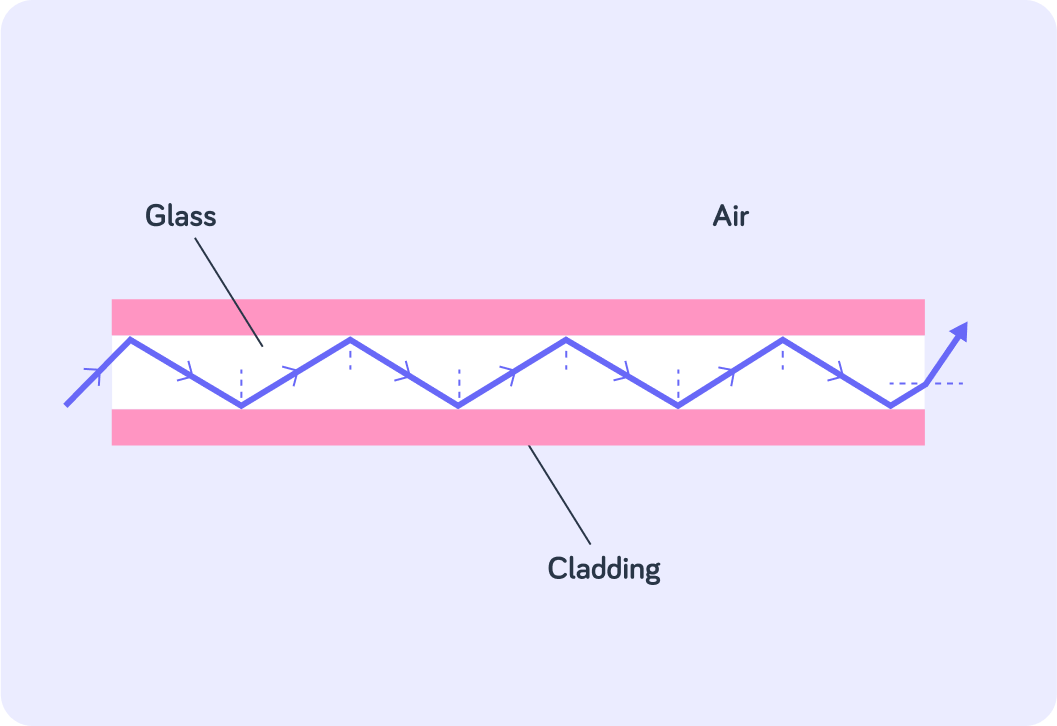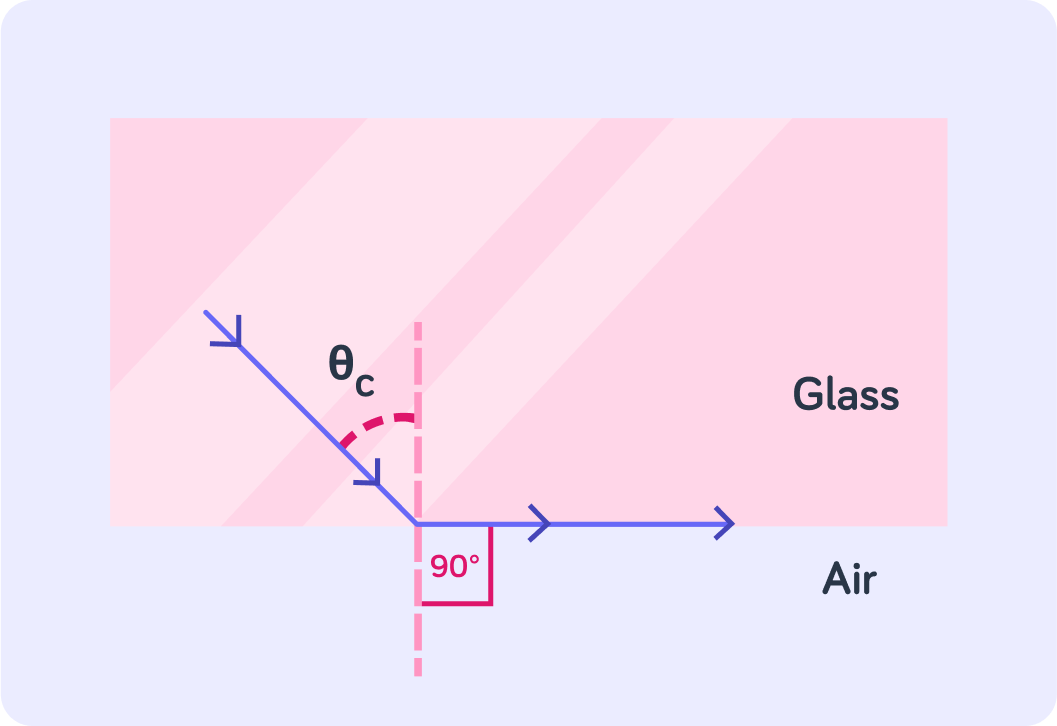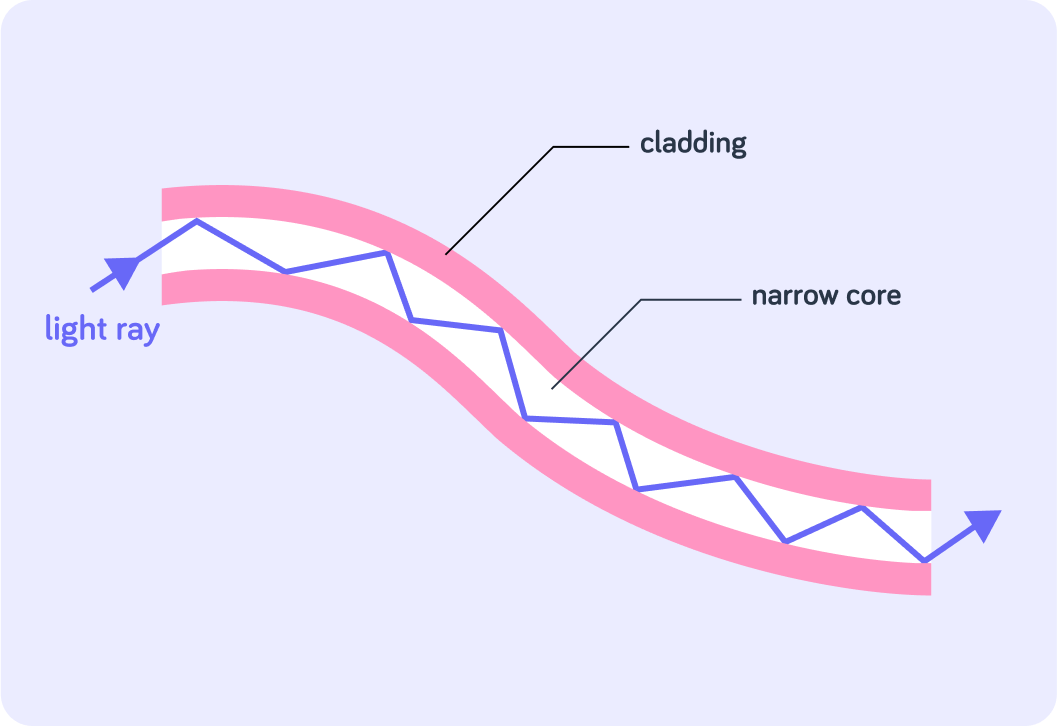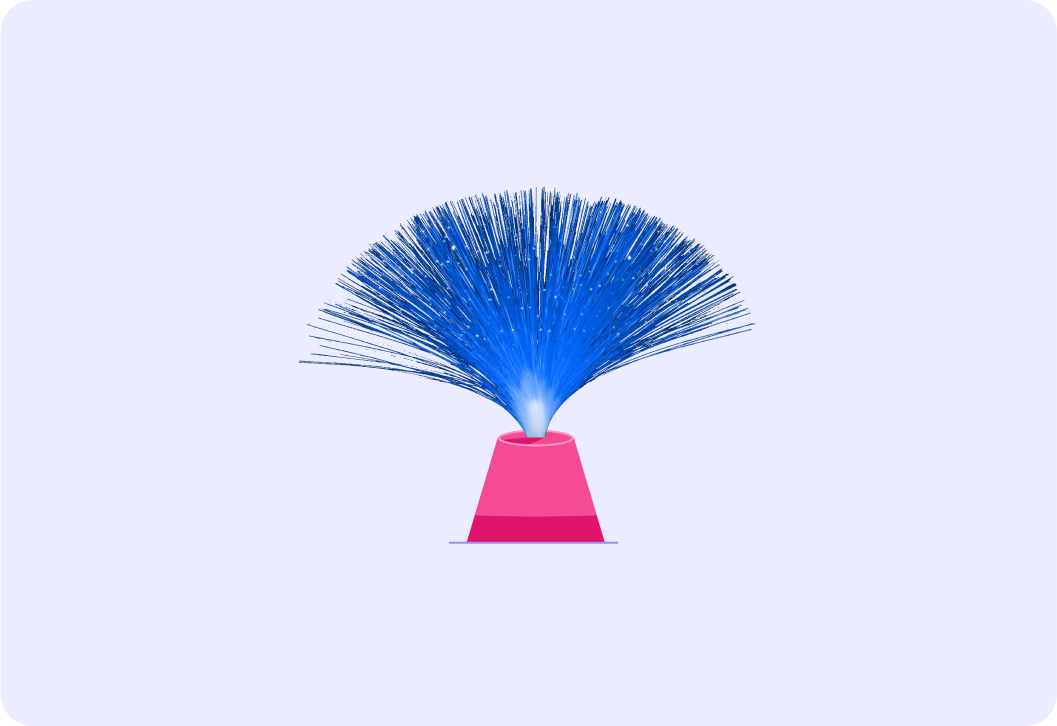YOU ARE LEARNING:
Optical Fibres

Optical Fibres
Optical fibres make use of total internal reflection to transmit information. They are used in telecommunications and medicine.
In this lesson, we will look at one of the applications of total internal reflection.
Let's recap! What is the angle of refraction that marks the boundary between refraction and total internal reflection?

What is the angle of incidence called, when the angle of refraction is 90o?

For total internal reflection to occur, does the angles of incidence, θi, have to be 'smaller' or 'larger' than the critical angle, θc?

Optical fibres are used to transfer light, which can be used to carry information. This is an alternative to using copper wires which transfer electrical current.
This is done by making use of total internal reflection.

By light reflecting back and forth within a glass tube, is any of it lost? Answer yes or no.


By making the angle of incidence of the light greater than the critical angle of glass...
no light gets refracted and all of it gets reflected until it reaches the end of the tube!

Do you think the cladding of an optical fibre should be more dense or less dense than the glass?

The refractive index of glass is 1.5. What is its critical angle? Recall Snell's law: n2n1=sinθ2sinθ1 . In this case n1 would be air and n2 would be glass.


Do you think that slightly bending an optical fibre will affect its ability to transfer light?

Here you can see a bending optical fibre.
Notice that the light is still hitting the glass at an angle greater than the critical angle.

Optical fibres carry information in the form of light. What do you think optical fibres are an alternative for?

What do you think optical fibres might be used for? Pick all the options you think are correct.

You can select multiple answers
Optical fibres are for example used in lighting and decorations, as in this image.
They are also used in telecommunications and the internet, just like current-carrying wires are. They are also used in medicine for endoscopes and CT scans. We will now look at these uses in more detail.

Optical fibres can be used for telecommunications. They are an alternative to satellite communication.
Optical fibres are point to point communication, whereas satellite communication is a signal sent to a satellite and back to Earth. Which signal travels the least distance? Answer 'optical fibre' or 'satellite'?

Out of signals sent via 'optical fibres' or 'satellites', which do you think suffers most from interference? Interference can be caused by storms, for example.

Which signal do you think is faster? A light signal through fibre or satellite signal through air? Answer with 'optical fibre' or 'satellite'.

You can calculate how long a signal will take by using the equation speed=timedistance . For example, how long would it take an optical fibre light signal to travel 600km? The speed of light is approximately 3×108m/s .

Lets look at some of the medical uses of optical fibres.
Endoscopes
These use optical fibres to produce an image of inside the body, by either carrying light into the body (like a torch), or carrying light reflected off internal body surfaces back out (like a camera). Endoscopes can help in procedures such as keyhole surgery as well as diagnosing diseases like cancer.
Computerised tomography (CT) scans
These generate 3D images of the body, by using X-rays. X-ray scans taken from multiple angles are processed by a computer to make detailed 3D images of inside the body.
